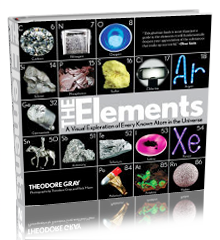Split penny. | |||
| Sample Image | Spin Video | QuickTimeVR Rotation | |||
| Split penny. There's a guy, Gunther von Hagens, who creates museum exhibits that consist of human bodies that have been split open and displayed as perfectly preserved cross sections or expanded versions of their natural state. This is the same idea, only applied to a 1990 US penny. Modern pennies consist of a zinc core with a copper plating. See the previous sample for information about how remove the copper and leave the zinc core, and this sample for information about how to remove the zinc core and leave the copper foil. Do both and glue them together with a tiny stick of pencil lead, and you have this expanded penny, which I used in a Popular Science column. Watch the rotation video to see if from all sides. Source: Tryggvi Emilsson and Timothy Brumleve Contributor: Tryggvi Emilsson and Timothy Brumleve Acquired: 4 May, 2007 Text Updated: 11 August, 2007 Price: $0.03 Size: 0.6" Purity: 99% Sample Group: Coins | |||
|

